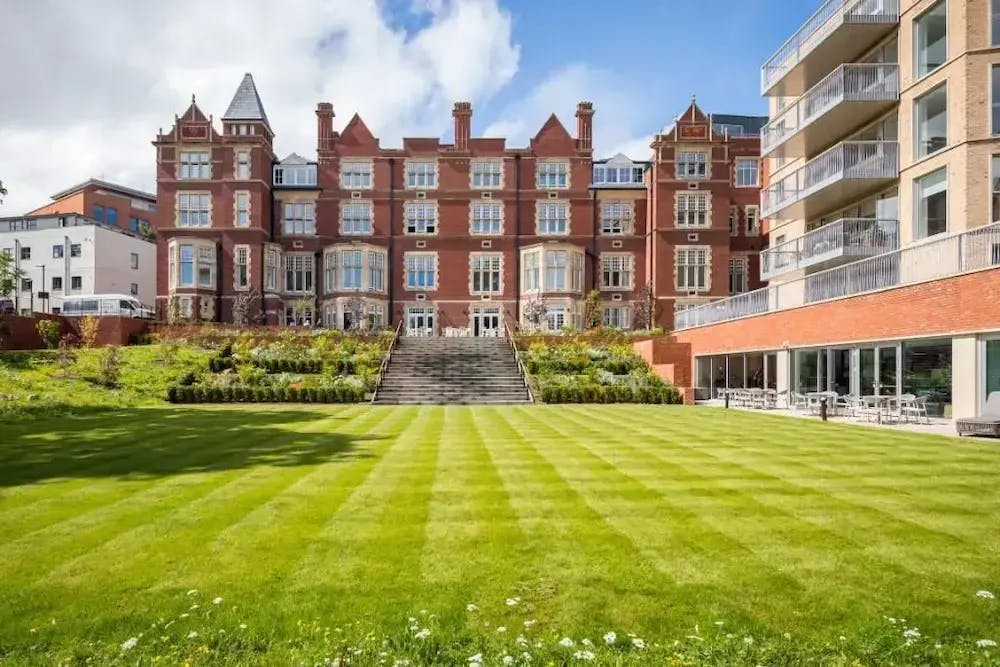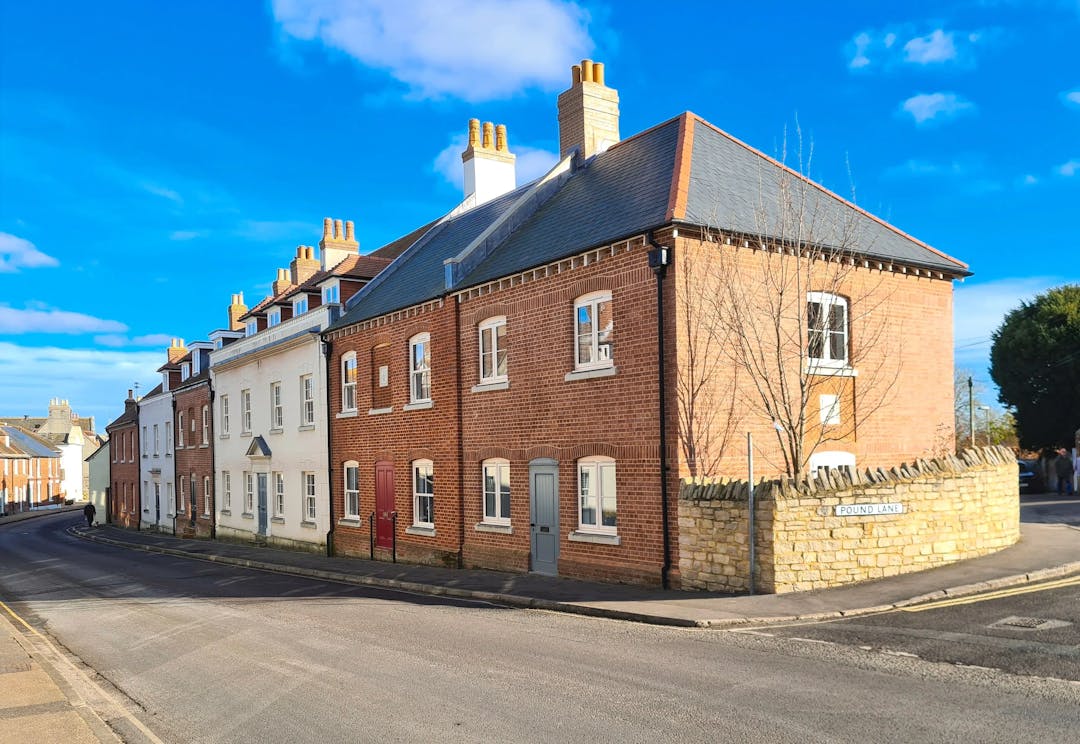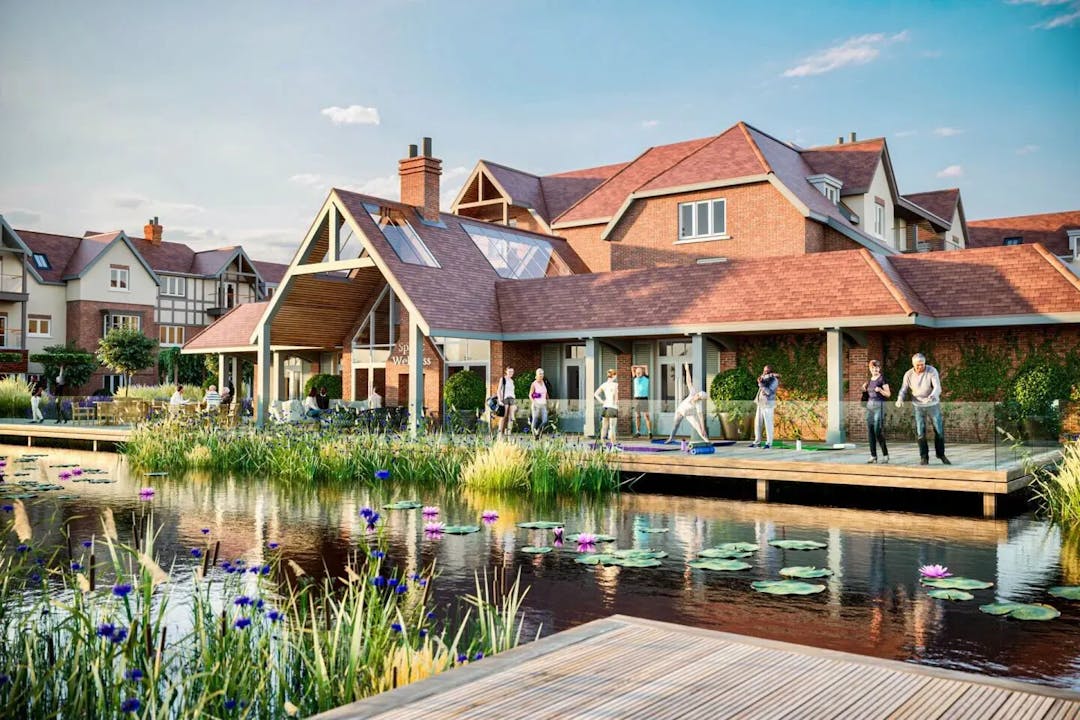What is the Future of Retirement Living? Elderly Trends For 2023

Estimated Reading Time: 14 minutes
While working can offer an invaluable sense of accomplishment, retirement living should be filled with the people, places and activities that you love.
With a greater demand for retirement properties by the sea and more age-friendly communities being created, retirement is heading in all sorts of new directions. That’s why we’re here to explain exactly what the future of retirement living looks like in the UK - and the trends every retiree must know about for 2023.
Here, we've shared the future of retirement living.
Where would you like to live?
Browse the best retirement homes near you through Lottie.
In this article
- Elderly trends in the UK
- Retirement trends
- Elderly housing trends
- Retirement bungalows
- Dementia villages
Elderly Trends in the UK
People in the UK are living longer than ever before, thanks to continual scientific and healthcare advances. With older adults making up a growing proportion of the population, they’re also making a larger contribution to society. Today, older people are our workers, volunteers, taxpayers and carers - all rolled into one.
Below, we’ve gone over a handful of elderly trends that are having a huge impact on the UK, along with how we think about age.
Working longer and later
ONS research has shown that the number of people aged over 70 who are still working in the UK has doubled to almost 500,000. This research found that the number of men aged 70 or over and still working part or full-time has increased by 137%, while the increase for women is 131%.
While some of this can be put down to changes in the State Pension age, the reason for older adults working later has also been attributed to the benefits of working past the normal retirement age.
Many people still working in their 60s, 70s and 80s are choosing to do so, saying they enjoy the sense of job satisfaction, and that their age and experience give them an advantage over younger colleagues.
On the other hand, some people are working longer for more secure finances. As people live longer, they’ll need to save more to have the same standard of living in retirement as current generations. This is particularly true for women, due to their higher life expectancy.
If the trend of working longer continues, retirement lifestyles are going to start looking very different over time.
Housing and neighbourhoods
By 2037, the UK’s ageing population will cause considerable change in the demand for housing. The proportion of households where the oldest person is 85 or over will grow faster than for any other age group. By 2037, there are projected to be 1.42 million more of these households in England - an increase of 161%.
Projected Number of Households in England By Age of Head of Household:
| 2012 | 2037 | % Change | |
|---|---|---|---|
| Under 25 | 801 | 867 | 8% |
| 25-34 | 3,111 | 2,838 | -9% |
| 35-44 | 4,135 | 4,348 | 5% |
| 45-54 | 4,413 | 4,979 | 13% |
| 55-64 | 3,658 | 4,285 | 17% |
| 65-74 | 3,116 | 4,309 | 38% |
| 75-84 | 2,184 | 3,611 | 65% |
| 85+ | 888 | 2,313 | 161% |
Source: 2012 Household Projections
The above table shows a clear trend - the oldest member of a household is generally going up. This data shows that households where the oldest person is aged 85 or over are growing the most, and by a long way.
Potential ways to meet this changing demand for housing could include providing suitable new homes, making sure that existing houses are adaptable and helping people to move into homes that are appropriate for their needs.
Social, physical and technological connectivity
Staying connected - whether this is through technology, accessing services, socialising or being able to easily travel - is a key issue as we age. Connectivity is important for allowing people to care for others, socially interact, participate in society (such as through volunteering) and access services, including health and social care.
In 2011, 630,000 over 65s said they found it difficult or very difficult to travel to their GP, while less than half of people aged 80 and over said they found it easy to travel to a hospital.
For people aged 70 and over, the biggest challenge is maintaining physical connectivity. Initiatives to improve social interaction can include age-friendly communities, good neighbour schemes, improving transport and access to projects that address crime.
Technology may also hold the key to keeping retired adults connected. The below table shows that from 2003 to 2013, the number of retired adults who used the internet rose from 22% to 45%. This number is expected to continue rising, particularly as generations who have now grown up around technology move towards retirement age.
Internet Usage by Lifestage in the UK From 2003 to 2013:
| 2003 | 2005 | 2007 | 2009 | 2011 | 2013 | |
|---|---|---|---|---|---|---|
| Students | 96% | 96% | 97% | 100% | 99% | 100% |
| Employed | 76% | 72% | 81% | 86% | 87% | 93% |
| Retired | 22% | 31% | 31% | 33% | 36% | 45% |
Source: OxIS 2013 top-line findings
The ageing population
In mid-2014, the media age of the UK population exceeded 40 for the first time, up from 33.9 years old in 1974. The steady increase in life expectancy and average age are expected to continue throughout the 21st century.
The table below shows how the number of people aged 75 and over in the UK is expected to continue rising, while the number of people in other age groups will often stay fairly constant.
| 2014 | 2019 | 2024 | 2029 | 2034 | 2039 | |
|---|---|---|---|---|---|---|
| Number of People Aged 0-14 | 11.4 million | 12 million | 12.3 million | 12.3 million | 12.3 million | 12.4 million |
| Number of People Aged 15-29 | 12.6 million | 12.4 million | 12.3 million | 12.6 million | 13.2 million | 13.5 million |
| Number of People Aged 30-44 | 12.7 million | 12.9 million | 13.6 million | 13.7 million | 13.3 million | 13.2 million |
| Number of People Aged 45-59 | 13 million | 13.4 million | 12.9 million | 12.6 million | 12.7 million | 13.4 million |
| Number of People Aged 60-74 | 9.7 million | 10.4 million | 11.1 million | 12 million | 12.4 million | 12 million |
| Number of People Aged 75+ | 5.2 million | 5.8 million | 7 million | 7.8 million | 8.7 million | 9.9 million |
| Total Population | 64.6 million | 66.9 million | 69 million | 71 million | 72.7 million | 74.3 million |
Source: Office for National Statistics
We can help you find the perfect UK retirement home. Use our free service to filter by location, price, the facilities available, purchase type and more!
Retirement Trends
As people live longer and the choices we make in later life evolve, new retirement trends have emerged. Here, we’ve taken a look at how retirement trends have shifted over the past 10 or so years.
Volunteering in retirement
As of 2020/21, 8.6 million pensioners are currently acting as volunteers and one million acting as carers for loved ones. This means that retired volunteers are now worth £48 billion to the UK economy.
Caring for a loved one in the UK equates to an economic value of £15.3 billion by itself.
This changing lifestyle trend for retirees has become so significant, it’s now responsible for 2% of the UK’s gross domestic product (GDP).
Another way retirees over 65 continue to get involved is through positions in local councils. 37% of all local authority councillors in England are aged over 65.
Spending more on travel
Retirees are seeing travel play a bigger and bigger role in their plans for a dream retirement. ONS figures show that individuals over 65 have increased their spending on overseas travel by 37% over the last four years, with £6.2 billion being spent abroad by retirees in 2018 alone.
A 2018 report from The Association of British Travel showed that people aged over 55 are now more likely to take a solo holiday than any other age group, with one in five people aged over 70 having taken a solo trip.
What’s more, Booking.com found that 40% of baby boomers (people born between 1946 and 1964) had travelled alone. Solo travel is often done through group trips, with travellers forming life-long friendships on their adventures.
Another interesting travel trend for retirees is that they tend to take longer trips than other age groups. They stay for an average of 6.6 nights, compared to an average of 5.8 nights across other age groups.
This trend matches up with what we’re seeing in retirement villages. Residents that travel frequently or for long periods are confident their property is safe and secure. Through regular cleaning services, residents can also look forward to returning to a clean home and fresh bedding.
Renting more
The number of retirees choosing to rent continues to increase. Research from the Centre for Ageing Better discovered that the number of people aged 60 and over renting their homes increased from 254,000 in 2007 to 414,000 in 2018.
Similarly, This is Money reported that there has been a 118% increase in the number of 55 to 64-year-olds renting compared to ten years prior. This is double the growth rate of 35 to 44-year-olds.
You can see below how searches in the UK for the term ‘retirement properties to rent’ has seen a large increase over recent months:
Source: Google Trends search data from October 2017 to October 2022.
Elderly Housing Trends
With the number of people over the age of 65 living in the UK set to continue increasing, developers are unsurprisingly putting plenty of resources into the private senior living sector.
A survey by Knight Frank predicted that the value of the retirement living market was set to increase from £39.6 billion in 2019 to over £55 billion in 2023.
There has been an unprecedented surge in demand from retirees for age-friendly communities this year, and this is expected to continue into 2023. Basing our insights on what people are searching for over the last 2 years*, we've predicted the biggest housing trends for retirees in 2023 - and the types of homes in demand.
Across the UK, we urgently need to focus on building a diverse mix of inclusive age-friendly communities, especially as the demand is there from the older generations. Whether you’re over 55 or in your 70s, later living housing must cater to meet the needs of everyone in their community.
As a result of the cost-of-living crisis, we’re seeing a greater demand for flexible rental options in later life, and this is only going to increase over the next few months.
Whether you’re looking for a new, accessible retirement bungalow, or a new property by the sea to ease you into retirement, there is something for everyone.
Flexible cost options
The UK largely used to be a nation of homeowners, but we’ve seen a huge shift in the rental market recently, particularly for those searching for their new retirement home.
Since the pandemic, retirement seekers are opting for more flexibility in later life, especially with rental opportunities - and this is set to grow in the next few years.
Over the last 12 months, more retirees than ever before are looking for rental properties:
| Search Term | How Much More Are People Searching For It? |
|---|---|
| ‘Over 55 retirement bungalows to rent near me’ | + 233% |
| ‘Retirement cottages for sale’ | + 40% |
| ’Retirement flats to rent’ | + 22% |
Renting in retirement is fast becoming a suitable option for retirees, especially with the cost-of-living crisis we’re all facing. Here, someone else takes care of property maintenance and you have the flexibility to move quickly if you ever needed to.
Diverse mix of later life properties
As our population ages, there’s an urgent need to provide a better range of housing options for older generations. A mixture of age-friendly properties is more important than ever, with a substantial increase in searches over the last 12 months for ‘senior apartments’ (+1100%), ‘warden assisted living’, (+22%) and ‘new retirement homes’ (+250%).
Warden controlled housing is a form of accommodation for people with elderly care needs. This isn’t a care home, but instead supported living.
We must focus on building new communities to cater for the needs of the older generations. If we don’t, there will be a shortage of suitable housing options.
Over 55 bungalows
A housing trend that’s expected to continue into 2023 is the surge in demand for over 55 bungalow properties. Over the last 12 months, online searches have reached an all-time high – and these are set to rise even more in the new year:
| Search Term | How Much More Are People Searching For It? |
|---|---|
| ’Over 55 retirement bungalows’ | + 85% |
| ’Over 55 retirement bungalows for sale’ | + 23% |
More demand for properties by the sea
More retirement developers are placing a greater focus on creating new communities in coastal destinations across the UK – and rightly so – because spending your later life in a coastal destination has become increasingly popular amongst retirees. Over the last 12 months, online searches for ‘retirement villages by the sea’ has increased by 23% on Google*, and this is expected to soar next year.
There are a ton of wellbeing benefits when you live by the sea, including better sleep, a heightened sense of relaxation and an improved, active lifestyle.
Communities with wellbeing benefits
Online searches on Google for ‘retirement communities’ have increased by 60% over the last 12 months*, with retirees prioritising social connections and a strong sense of belonging amongst like-minded people.
People are generally living longer, and as we age, it’s becoming increasingly important to prioritise your health and wellbeing. Retirement communities already prioritise the health of all residents, with luxury facilities such as gyms and wellness spas, along with regular exercise classes for over 60s.
However, this is set to become even bigger over the next few years. Through specialised staff (including physiotherapists and nutritionists), retirement homes will offer every resident a bespoke and personalised health package.
Source: Internal analysis created by Lottie via Google Keyword Planner over the last 12 months. The full data set is available on request.
Retirement Bungalows
A retirement village is a housing development built specifically for older buyers, featuring a range of different property types. Along with houses, retirement flats to buy, retirement flats to rent and apartments, one of the increasingly popular types of retirement homes are retirement bungalows.
As is the case with all property types within a retirement village, a retirement bungalow can be purchased or rented.
The best retirement villages will come with communal areas and on-site amenities like swimming pools, gyms, spas, restaurants, libraries, activity rooms, bars and more!
There’s clearly a growing demand for this type of retirement living property. According to research from retirement living specialist Audley Villages, more than 50% of people over the age of 55 are actively considering downsizing to free up some of their wealth.
Of those considering downsizing, 43% said they’d use the money to support their lifestyle, 39% said they’d spent it on holidays, 39% said it’d go towards home improvements and 22% said they’d use it to help their loved ones.
Dementia Villages
As dementia care continues to evolve - with research advancing towards improved treatments and care - a small number of medical centres have been specifically designed to offer unique dementia caring methods.
Dementia villages draw on many of the ideas from dementia care homes, creating custom living environments for seniors with dementia. Here, residents with dementia are given freedom and security. The staff take care of everything from cooking meals and planning activities to assisting with bathing, personal care, nursing care (such as that received in a nursing home) and administering medication.
Secure buildings mean residents can roam and explore as much as they wish. Residents are also encouraged to get involved with things like cooking, shopping and other household tasks.
A combination of reminiscence therapy and freedom helps residents and staff alike deal with any challenging behaviour.
Hogeweyk Dementia Village
Located in the Netherlands and home to over 150 people with severe dementia, Hogeweyk is the only care facility of its kind.
In this dementia village, residents live a seemingly normal life, but are actually being watched by caregivers at all time. There are almost twice as many caregivers as residents in the village, and they keep an eye on everything from the on-site shop to the hair salon.
There’s only one door in and out of Hogeweyk - which is kept under 24-hour surveillance. This safety measure is important to keep wandering residents out of harm’s way. There are 25 different clubs at Hogeweyk, with residents encouraged to take part in as many as they wish.
Living in Hogeweyk has psychological and physical benefits. Residents are more active, take fewer medications, eat better and live longer!
Germany and Switzerland have been studying life at this dementia village, so may be next to create their own dementia care villages.
Retirement living developments offer secure, vibrant and luxurious housing with state-of-the-art facilities for older adults. Request a free retirement living shortlist and we’ll recommend retirement properties matching your budget, location and desired facilities.



